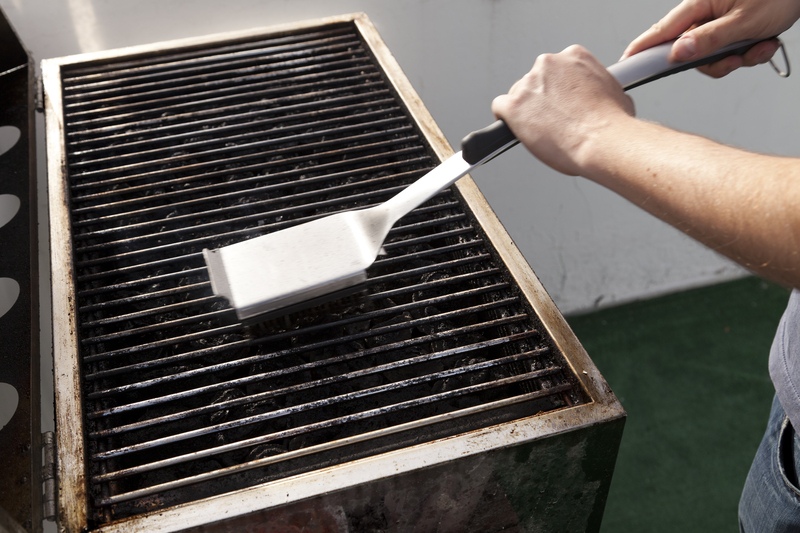Crafting a Successful and Efficient Window Cleaning Plan
Posted on 23/08/2025
Crafting a Successful and Efficient Window Cleaning Plan
Window cleaning may seem like a straightforward task, but developing a successful and efficient window cleaning plan is essential for achieving spotless results consistently. Whether you're responsible for maintaining residential, commercial, or high-rise buildings, a well-structured strategy leads to cleaner windows, improved building aesthetics, enhanced natural light, and increased property value. This comprehensive guide explores every aspect of crafting an effective window cleaning plan that delivers top-tier outcomes while saving you time and money.

Why a Strategic Window Cleaning Approach Matters
Clean windows are not only about appearances; they also contribute to health, comfort, and energy efficiency. Approaching window cleaning systematically offers numerous benefits, including:
- Enhanced curb appeal that leaves a positive impression on visitors, clients, and tenants.
- Prolonged window lifespan by removing corrosive dirt and contaminants.
- Improved indoor air quality and natural lighting, making spaces more enjoyable and productive.
- Cost savings from reduced need for repairs and glass replacements.
- Heightened safety with scheduled inspections and thorough cleaning, particularly in commercial and multi-story environments.
Assessing Your Window Cleaning Needs
Before diving into the cleaning process, take time to evaluate the specific needs of your building or property. Factors to consider include:
- Type of property: Is it residential, commercial, or institutional?
- Window types and accessibility: Are there skylights, high-rise panels, frosted glass, or architectural features complicating access?
- Local climate and pollution: Are you in an urban environment prone to dust and grime, or near the coast with salty air?
- Previous maintenance routines: How often have the windows been cleaned, and what issues have arisen in the past?
Key Elements of a Successful & Efficient Window Cleaning Plan
1. Create a Window Inventory
Start by developing a detailed inventory of all windows, doors, skylights, and glass features. Include the following for each:
- Location (by floor and room)
- Dimensions and type of glass
- Accessibility (ground-level, above awnings, high-rise, etc.)
- Degree of soiling (light, moderate, heavy buildup)
2. Determine the Ideal Cleaning Frequency
Scheduling is a critical part of your window cleaning strategy. Consider:
- Residences: Usually, a deep cleaning every 3-6 months suffices, but homes near highways, construction, or dense foliage may require more frequent attention.
- Offices and Commercial Buildings: Monthly or bi-monthly cleaning is standard, especially for properties in bustling city centers.
- Retail Stores and Showrooms: Cleanliness is paramount. Weekly or even daily cleaning for entrance areas, display windows, and high-traffic zones may be necessary.
- Special Circumstances: Post-construction cleanups, pollen seasons, or after storms can trigger unscheduled cleanings.
3. Choose the Right Cleaning Methods & Techniques
Different windows demand different approaches. For efficient window washing, select appropriate techniques:
- Traditional Methods: Squeegees, microfiber cloths, buckets, and eco-friendly detergents work for most small-scale jobs.
- Water-Fed Pole Systems: Ideal for high or hard-to-reach windows, these use purified water and extendable poles for streak-free results.
- Pressure Washing: Useful for exterior glass with heavy soiling but must be used cautiously to avoid damage.
- Steam Cleaning: Perfect for allergy-sensitive locations and interiors.
- Automated and Robotic Cleaners: Handy for expansive glass facades or ongoing commercial maintenance plans.
Step-by-Step Guide to Efficient Window Cleaning
Step 1: Prepare Your Tools and Supplies
Gather all necessary equipment before starting. A well-stocked window cleaning kit typically includes:
- Quality squeegees in various sizes
- Soft, lint-free microfiber cloths
- Buckets and eco-friendly, streak-free cleaning solutions
- Extendable poles and ladders for hard-to-reach areas
- Scrapers or razors (for tough debris, used carefully)
- Protective gear (gloves, goggles, harnesses for elevated work)
Step 2: Safety First
Window cleaning can involve working at heights or using chemicals. Follow these essential safety precautions:
- Inspect ladders and scaffolding before use, ensuring they are stable and appropriate for the task.
- Wear appropriate PPE (Personal Protective Equipment) such as gloves, goggles, nonslip footwear, and harnesses for elevated operations.
- Work in teams for high-rise or complex jobs to enhance safety and efficiency.
- Follow local laws and OSHA guidelines related to workplace and building cleaning safety.
Step 3: Remove Loose Dirt and Dust
Start by using a soft brush, dry microfiber cloth, or duster to gently remove loose dirt, dust, cobwebs, and pollen. Pre-cleaning reduces streaks and scratches, allowing for a more thorough wash in subsequent steps.
Step 4: Wash Glass Thoroughly
Apply your chosen cleaning solution using a squeegee or cloth. For a homemade eco-friendly option, mix distilled water with a small amount of white vinegar or mild dish soap. Allow the solution to sit for a few seconds, then use the squeegee in overlapping strokes from top to bottom. For heavily soiled windows, a second wash or spot-treatment may be necessary.
Step 5: Pay Attention to Details
Don't forget window frames, tracks, sills, and screens. These areas accumulate dirt and can impede window operation or compromise indoor air quality. Use a damp towel followed by a dry cloth to ensure all surfaces are clean and dry.
Step 6: Polish and Inspect
Use a dry, lint-free microfiber cloth to polish each pane, ensuring a streak-free finish. Inspect your work for missed spots or drips, and tidy up surrounding areas for a complete, professional presentation.
Smart Scheduling and Organizational Tips
For maximum efficiency, consider implementing the following organizational strategies:
- Use scheduling software or cloud-based calendars, particularly for larger properties or professional window cleaning businesses.
- Set reminders for key maintenance dates and adjust for seasonal demands (e.g., post-pollen or pre-holiday cleanings).
- Assign team roles to divide work by window type, location, or difficulty, increasing speed and quality.
- Document each session, noting observations such as broken seals, cracks, or hard water stains for timely repairs.
Eco-Friendly and Cost-Efficient Practices in Window Cleaning
Adopt Green Cleaning Solutions
Using biodegradable, non-toxic cleaners protects both your health and the environment without sacrificing cleaning power. Avoid harsh ammonia or chemical-heavy solutions, especially in family or pet-friendly spaces.
Conserve Water and Resources
Practice mindful water usage by washing on overcast days (less evaporation) and using microfiber cloths, which require less solution. Modern window cleaning tools are designed to maximize results while reducing water waste.
Maintain and Reuse Tools
Invest in durable, high-quality window cleaning equipment and clean them thoroughly after each use. This reduces regular replacement needs and keeps your cleaning results consistently high.
When to Hire Professional Window Cleaners
While many homeowners and facilities managers can execute a basic window cleaning plan, certain circumstances call for professional expertise:
- High-rise or hard-to-access windows that require specialized equipment or skills.
- Large commercial buildings with extensive glasswork.
- Persistent, stubborn stains or damage (e.g., hard water stains, mineral buildup, or scratched glass).
- Compliance with legal or industry standards in public/health or hospitality sectors.
Common Window Cleaning Mistakes to Avoid
To ensure your window cleaning plan is both successful and efficient, steer clear of these pitfalls:
- Cleaning windows in direct sunlight: Causes rapid drying, leading to streaks and spots.
- Using abrasive materials: Paper towels and rough sponges can scratch glass.
- Neglecting the frames and sills: Leads to compromised results and future staining.
- Overusing cleaning solution: Excess soap or chemicals leave streaks and residue.
- Skipping safety protocols: Increases risk of accidents and damage.

Maximizing Long-Term Success: Maintenance and Upgrades
A great window cleaning plan is dynamic. Update your approach as seasons change, building use evolves, or new technologies emerge. Maintenance steps include:
- Conduct periodic audits of your cleaning schedule, tools, and results.
- Replace worn-out equipment as needed for ongoing efficiency.
- Stay informed about green cleaning options and advances in window cleaning tools.
- Solicit feedback from tenants, employees, or clients to identify areas for improvement.
Conclusion: Your Blueprint for Window Cleaning Success
A well-crafted, efficient window cleaning plan is vital for spotless, streak-free windows that boost building value, comfort, and beauty. By assessing your environment, adopting smart techniques, prioritizing safety, embracing eco-friendly practices, and committing to regular review, you ensure exceptional results and streamlined maintenance. Implement these strategies and watch your property's windows shine year-round, reflecting your commitment to cleanliness and quality.
For more tips on efficient window cleaning strategies and to stay updated on the best industry practices, bookmark this guide and revisit it as your property's needs evolve!



